English Version
For those visiting Cuba, the Plaza de la Catedral in Old Havana is a must-see place, and we Cubans are privileged to have the existence of this relic in which we find one of the symbols of the city, the cathedral of San Cristóbal de la Habana, which is also a World Heritage Site.
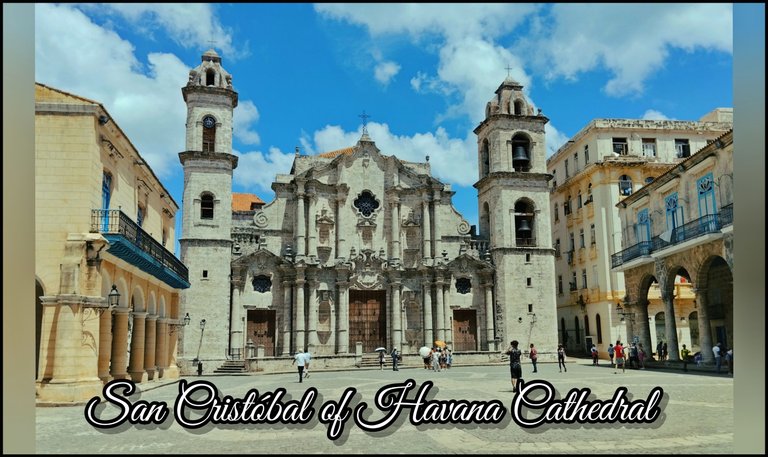
In my publications on architecture I almost never mention architectural styles, but this time I have to point out how admirable the baroque style is in this construction with its elaborate design and decorations full of details. The few times I have visited the square the church has been closed, so I have never been able to enter and see inside. I have only seen it in photographs and it is really impressive, so I must return to it again, and see if next time I am lucky.
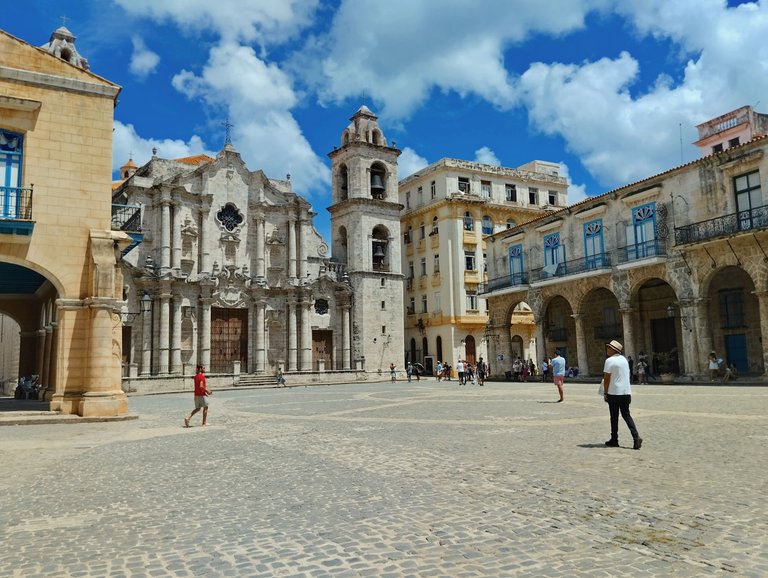
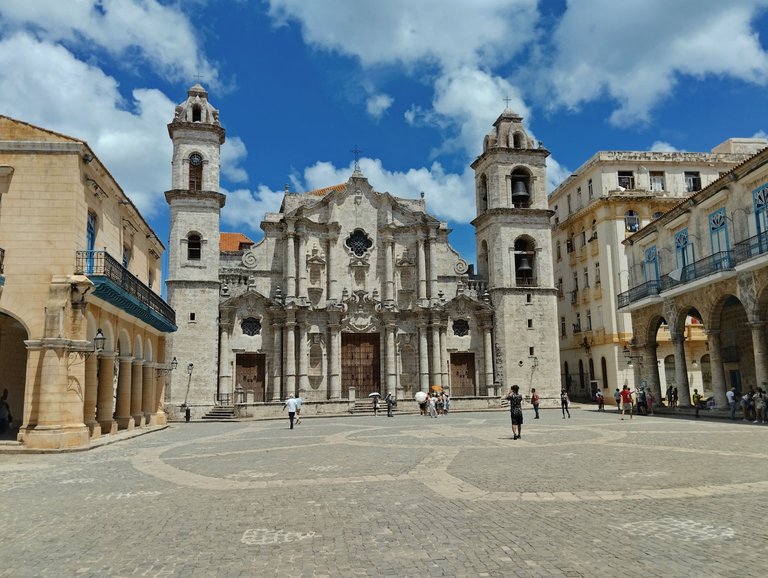
One of the things that impresses me most about this temple is its sheer size, it is imposing and everything around it seems smaller in comparison. The two towers that stand at either end are grandiose, crowned at the top with a cross. I spent some time looking at them and found an interesting detail I hadn't noticed before, the towers are not the same. Each one has details that make them unique, for example, the one on my right is wider than the one on the left, I imagine that this is due to the fact that the church bells are located there. Huge bells that when they toll can be heard all along the surrounding streets. The square is old and the ground is covered with cobblestones, which form a design in its centre, so you can walk here freely as only people are allowed to pass through.
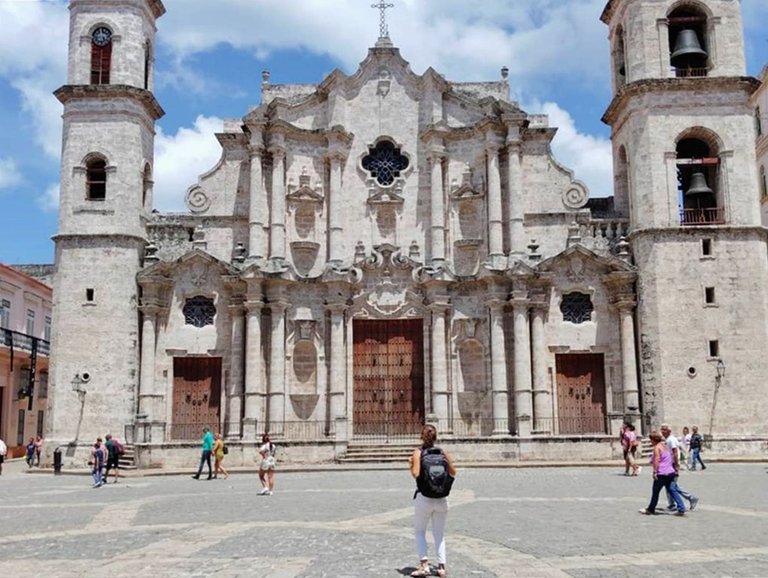

Around the square there are also important buildings that were built by noble and wealthy people (marquises and counts) in the 18th century. Today, under the wide arcade of what was once the Palace of the Marquis of Arcos, there is a sculpture of the renowned Spanish dancer and choreographer Antonio Gades, a life-size bronze figure leaning on one of the many columns of the building from which it seems to overlook the square. Antonio Gades requested before his death that his ashes be transferred and deposited in Cuba. This sculpture remains as an eternal homage to the friendship he felt for my country.
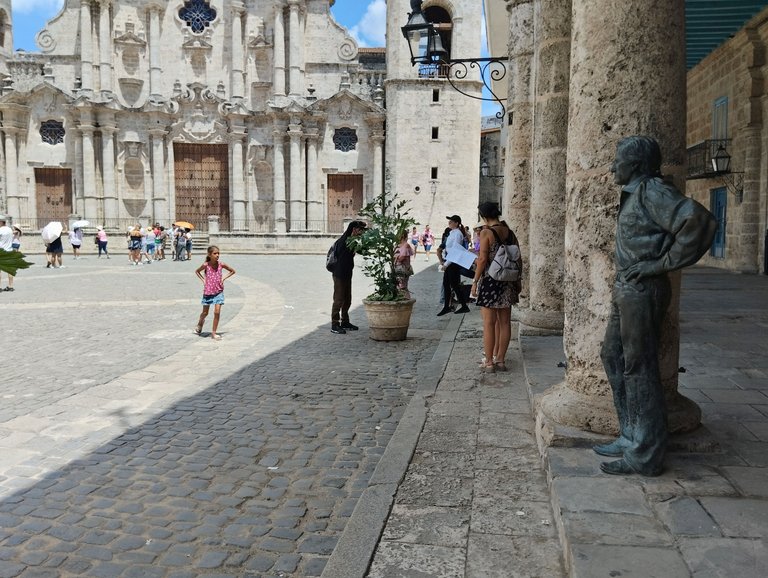
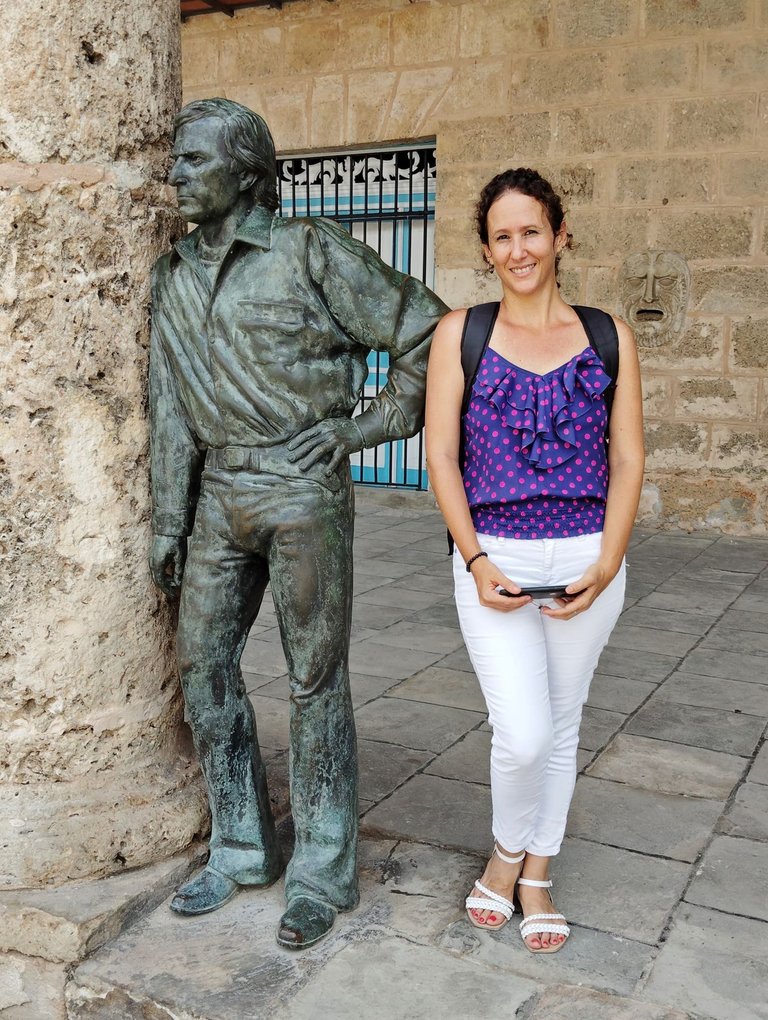

The site is also home to the residences of the Count of Casa Bayona, now the Museum of Colonial Art, and the House of the Marquis of Aguas Claras, both two-storey colonial houses with distinctive colonial features such as high arches, and wooden windows with coloured glass.
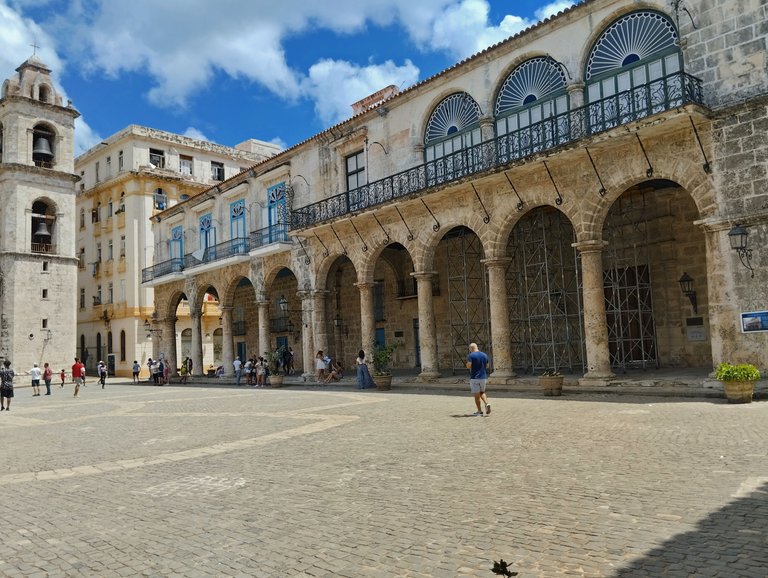
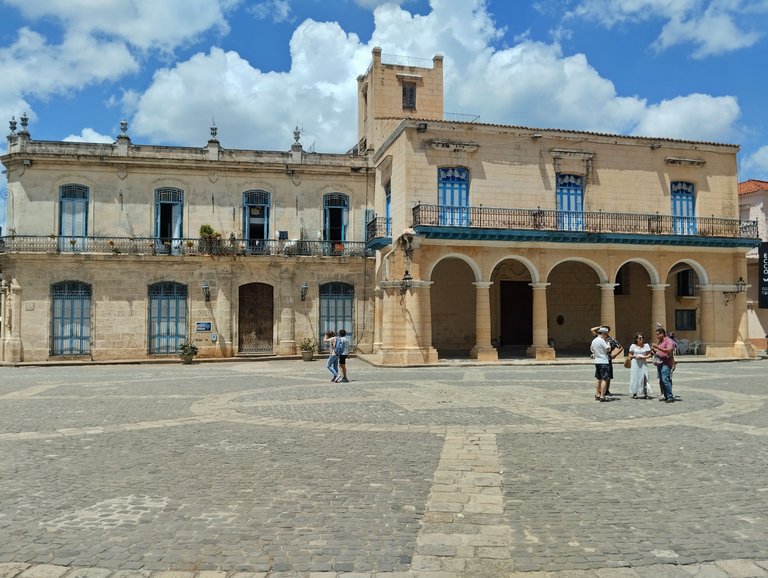
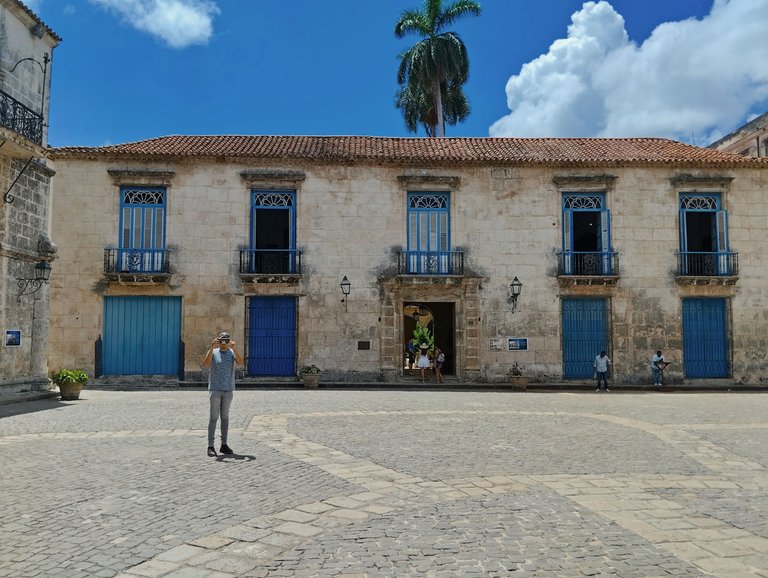
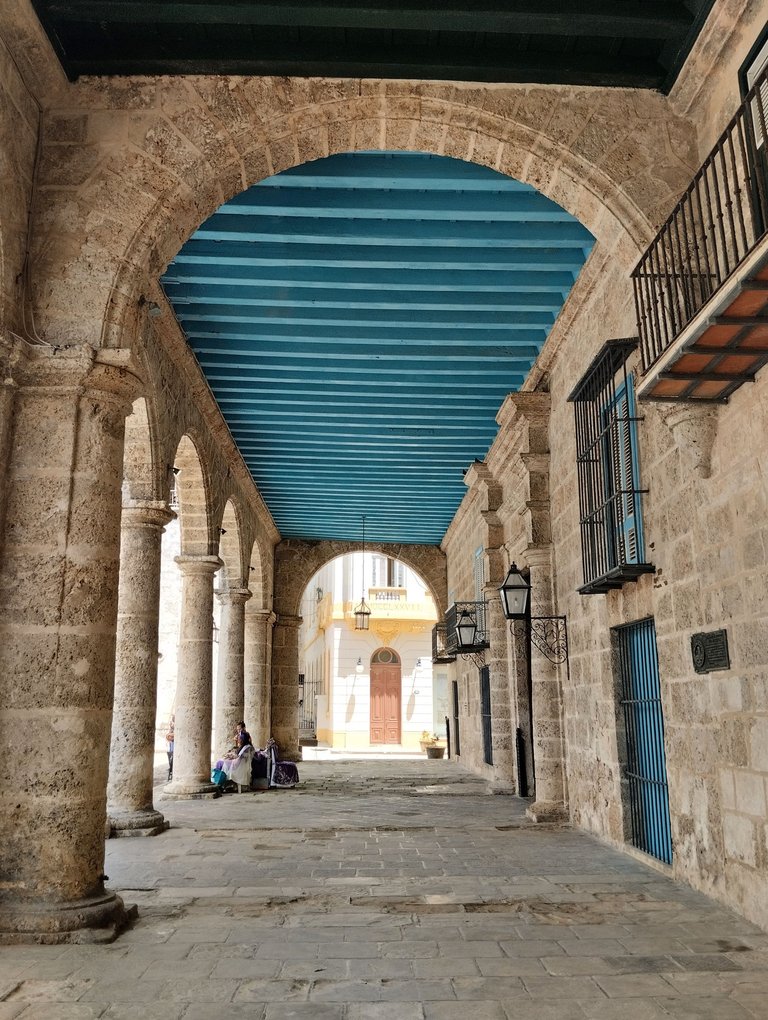
Everything around this square is amazing, and the whole place is also a great museum, a place where we can meet and learn more about the history and culture of Havana.
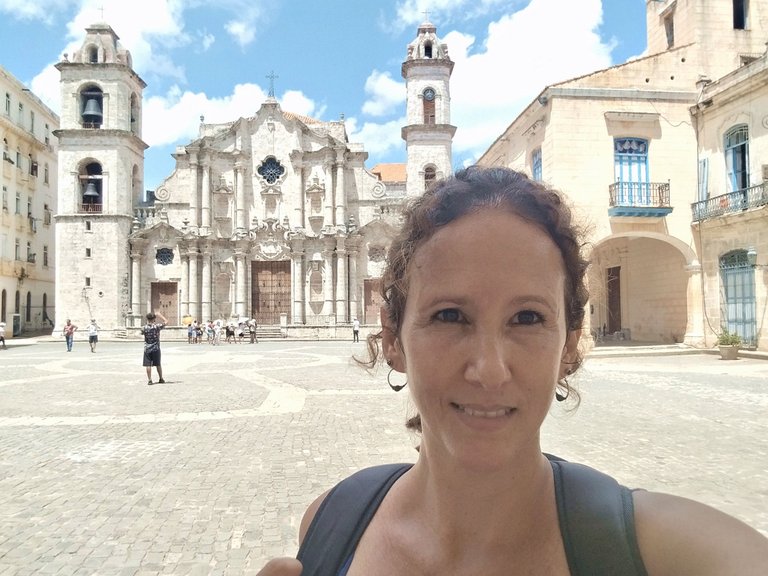
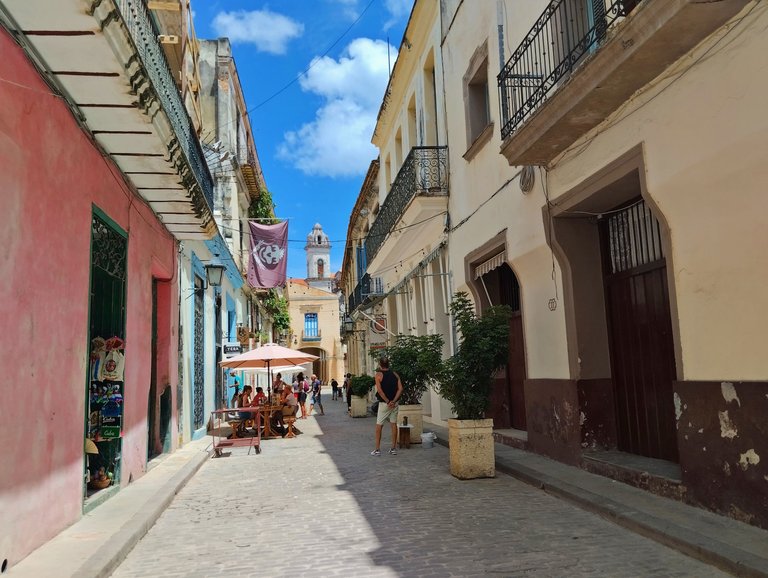
Versión en Español
Para quienes visiten Cuba, la Plaza de la Catedral en La Habana Vieja es un lugar que sin duda no pueden dejar de conocer, y los cubanos somos privilegiados de contar con la existencia de esta reliquia en la que se encuentra uno de los símbolos de la ciudad, la Catedral Católica de San Cristóbal de la Habana, la cual además es considerada Patrimonio de la Humanidad.
En mis publicaciones sobre arquitectura casi nunca menciono los estilos arquitectónicos, pero esta vez tengo que señalar lo admirable del estilo barroco en esta construcción con su elaborado diseño y decoraciones llenas de detalles. Las pocas ocasiones que he visitado la plaza la iglesia ha estado cerrada, por lo que nunca he podido entrar y ver su interior. Solo lo he visto en fotografías y es realmente impresionante, así que se impone regresar a este nuevamente, y ver si para la próxima la suerte me acompaña.
Una de las cosas que más me impresiona de este templo es su gran tamaño, es imponente y a su alrededor todo parece más pequeño en comparación. Las dos torres que se levantan en cada uno de sus extremos son grandiosas, coronadas en lo más alto con una cruz. Estuve un rato observándolas y encontré un detalle interesante en el que no me había fijado antes, las torres no son iguales. Cada una tiene detalles que las hacen única, por ejemplo, la que quedaba a mi derecha es más ancha que la que se encuentra a la izquierda, supongo que esto se debe a que en su interior se encuentran las campanas de la iglesia. Inmensas campanas que cuando repican se deben de escucha a lo largo de muchas calles alrededor. La plaza es antigua y el suelo está cubierto por adoquines, que componen un diseño en su centro, por tanto, se puede caminar por aquí con total libertad ya que no se permiten vehículos.
Alrededor de la plaza hay también importantes edificaciones que fueron construidas por nobles y acaudalados personajes (marqueses y condes) en el siglo XVIII. Actualmente bajo la amplia arcada del que en otro tiempo fuera el Palacio del Marqués de Arcos, se encuentra una escultura del reconocido bailarín y coreógrafo español Antonio Gades, esta figura en bronce a tamaño real está apoyada en una de las tantas columnas de la edificación desde la que parece observar la plaza. Antonio Gades un amigo de Cuba, quiso que sus cenizas fueran trasladadas y se quedaran aquí. Esta escultura queda como un homenaje eterno a la amistad que sentía por mi país.
En este sitio también se encuentran las residencias del Conde de Casa Bayona, que en la actualidad es el Museo de Arte Colonial, y la Casa del Marqués de Aguas Claras, ambas son casas coloniales de dos plantas con características distintivas de la época colonial como los altos arcos, y las ventanas de madera con sus cristales de coloridos colores.
Todo lo que rodea a esta plaza es asombroso, y todo el sitio es también un gran museo, un lugar donde podemos encontrarnos y conocer más sobre la historia y la cultura de la Habana.
Contenido original del autor. © 2024 @jordy0827. Todos los derechos reservados.








